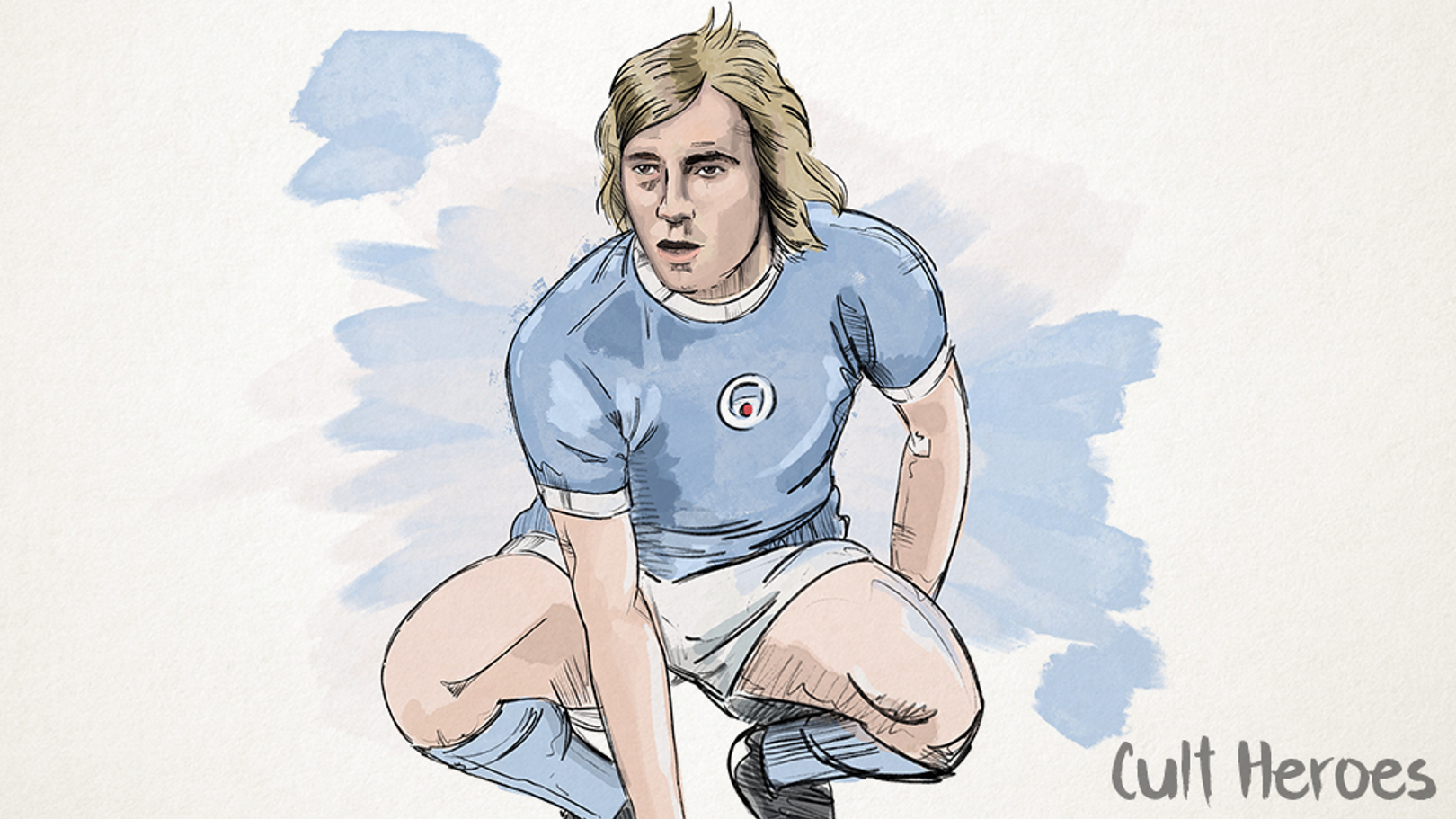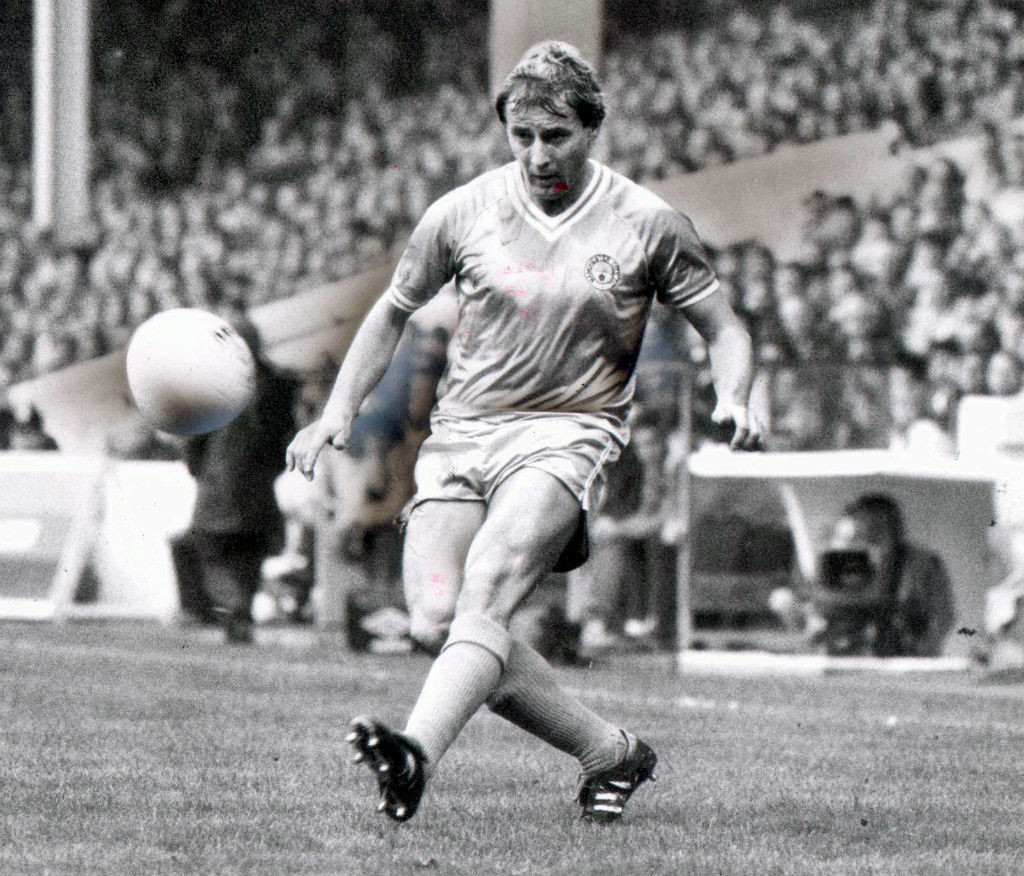Celebrate his birthday by looking back on our Cult Heroes piece from 2020, which reflects on his storied career.
***
When young Scot Asa Hartford went for his medical prior to joining Leeds United, it looked as if he was set for a glorious career at Elland Road with a team who looked likely to dominate the seventies.
But tests showed Asa had a hole in his heart and the deal collapsed, leaving the player and Leeds boss Don Revie devastated.
Hartford returned to his club, West Brom, for a short while and during this time City manager Tony Book went along to see Asa in action.
He’d had a more close up view of the Clydebank-born schemer when City beat West Brom 2-1 in the 1970 League Cup final and was convinced that if there was a health problem, it didn’t affect his football one iota.
CITY+ | SUBSCRIBE TO ACCESS EXCLUSIVE CONTENT
He opened discussions with the Baggies and then brought the player to Maine Road for a series of medical tests – all of which showed that the heart problem was, in fact, not a problem.
Leeds’ loss was City’s gain and the Blues paid £250,000 to Albion and in doing so conducted a fantastic piece of business.
Hartford was a midfield dynamo in every sense and became pivotal to Book’s team, taking on the prized No.10 shirt vacated by Francis Lee the season before.
He slotted in perfectly alongside Colin Bell and Dennis Tueart initially, as Book rebuilt the ageing team that had won so many trophies just a few years before.
He made his debut in a 4-0 win over West Ham and then scored the winner in his second game against Spurs.
The following season the midfield proved to be problematic for Book as he lost Bell to injury, Marsh was dropped and then transferred while youngsters Peter Barnes, Gary Owen, Ged Keegan and Paul Power flitted in and out of the side.
Hartford was the one constant in the team, his role as leader and creative force more important than ever.
He took the added responsibility in his stride and ended the campaign as City’s third top scorer in the league with nine goals, scoring five in four games during one spell. He also was influential in our path to the 1976 League Cup final, playing in all eight ties and picking up his first winners’ medal.
Hartford’s third season was arguably his best as he marshalled youngsters Power, Owen and Barnes into a formidable midfield that was ultimately only bettered by Liverpool, who won the league title over Book’s men by a single point.
The Kippax had taken to Hartford in a big way because he was a player who never gave any less than his all and he was an unusual mix of skill and aggression and was undoubtedly one of the best midfielders of his generation, though he didn’t always get the credit he deserved.
In his fourth season, City finished fourth and Asa was at the peak of his powers.
So much so, that when the 1978 World Cup finals in Argentina began, many City fans followed the World Cup as honorary Scotland fans because Asa was playing (and Willie Donachie, of course!).
It’s a fact that he is second only to Colin Bell when it comes to international caps won at the time – 36 – while playing for City.
Malcolm Allison’s ill-fated return to Maine Road in 1979, however, was to put a spanner in the works for Asa’s City career. The new coach was eager to rid the club of all it’s international stars and replace them with younger, inexperienced players.
SHOP OUR DEFINITELY CITY RANGE
Asa survived what would be his fifth season at the club, scoring vital goals in the UEFA Cup run including one against AC Milan – but at the end of the 1978/79 season he was on his way to Nottingham Forest where he infamously stayed just a few weeks under Brian Clough before moving on to Everton.
It’s hard to understand why things didn’t work out for Asa at Forest – perhaps it was a personality clash – but, then again, it was mystifying as to why City had let such an asset leave in the first place.
Tony Book called Hartford ‘my little diamond’ and his transfer was a huge disappointment to what was now becoming a largely disgruntled City following.
After just a couple of years away, however, new City manager John Bond re-signed Asa who slotted back into the No.10 shirt as if he’d never been away.
It was a hugely popular move and proved that, as many of the established stars that were swept out of the club by Allison in ‘79 would probably admit, he’d never wanted to leave in the first place.
Hartford played 68 more league games for the Club, but was powerless to stop City from being relegated in 1983.
After almost a decade at Maine Road, he then left for a swan song in the North American Soccer league with Fort Lauderdale.
Asa would later return in 1995 as Alan Ball’s assistant, managing the team in a caretaker role for a while and then ran our reserve team for several years before finally leaving City once again in the summer of 2005.
A fantastic player, a good coach and a top man... no wonder so many people remember Asa Hartford as a true City crowd idol.










